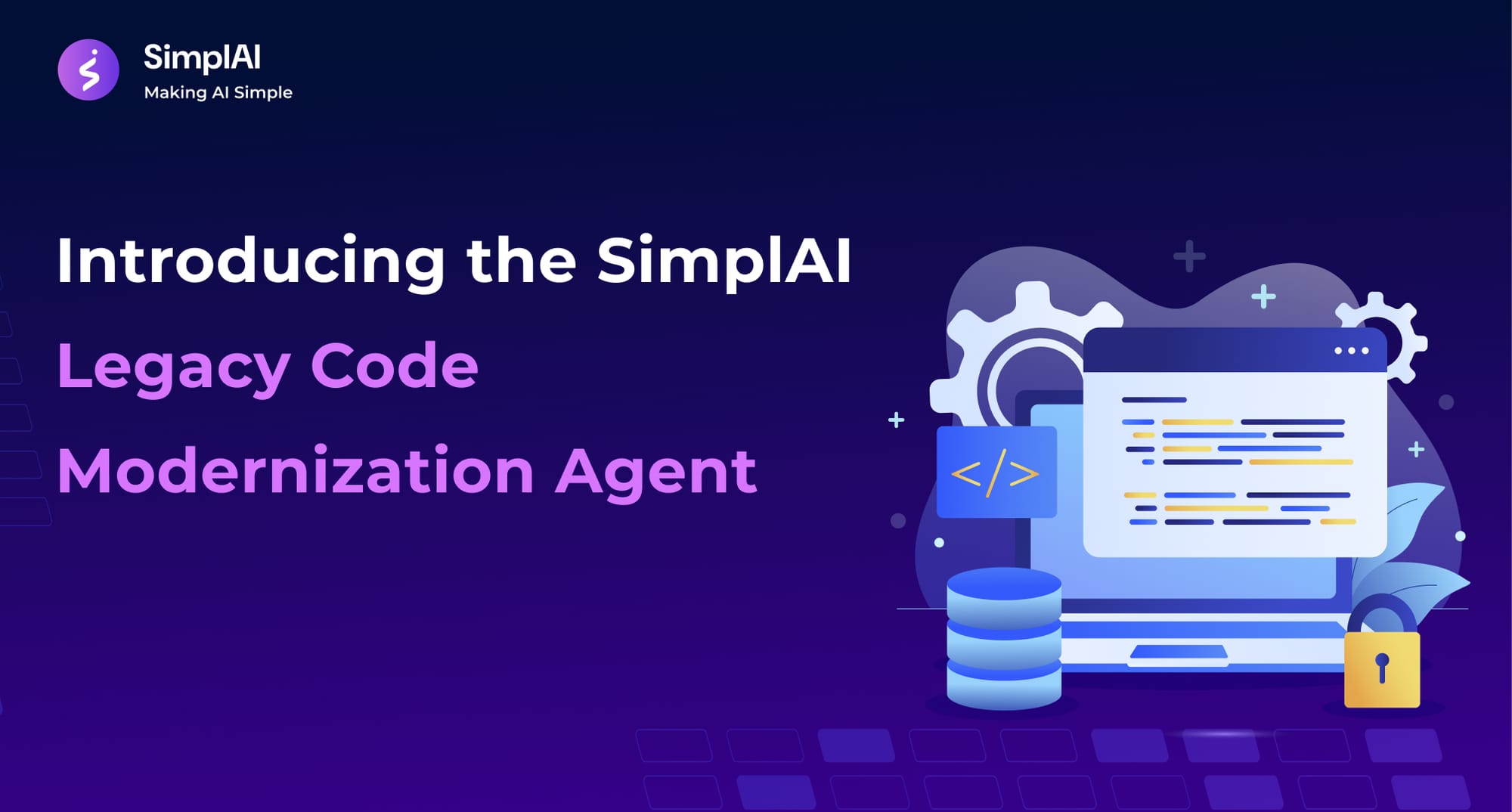Introducing the SimplAI Legacy Code Modernization Agent

AI-Powered Automation for Legacy Code Understanding and Analysis
The SimplAI Legacy Code Modernization Agent is an advanced AI-powered automation tool designed to simplify the complex process of legacy code modernization. By converting low-level assembly instructions into structured, human-readable pseudo code, it accelerates software development, enhances debugging efficiency, and streamlines reverse engineering workflows.
Revolutionizing Legacy Code Analysis and Modernization
Managing and modernizing legacy code is a daunting task for software engineers, analysts, and enterprises dealing with outdated systems. The SimplAI Legacy Code Modernization Agent transforms this challenge into an efficient, automated process. Leveraging cutting-edge AI-powered automation, this intelligent agent extracts insights, converts intricate assembly instructions into structured pseudo code, and enhances code maintainability with ease.
Whether you're debugging legacy systems, performing code analysis, or preparing for a system upgrade, this AI agent enables faster comprehension, reduces errors, and optimizes development workflows.
When exploring the agent in the Experience Center, you’ll witness some of its core functionalities in action. However, the full potential of this transformative solution extends far beyond a single interaction. This blog provides a comprehensive overview of how the agent revolutionizes your software modernization workflows.
Empowers Developers to Operate Beyond Manual Limits
1. Assembly to Pseudo Code Translation
- Converts assembly code into well-structured, high-level pseudo code.
- Maintains logical flow and context for seamless interpretation.
- Bridges the gap between low-level programming and modern software engineering practices.
2. Comprehensive Test Case Analysis
- Automatically processes multiple test cases to ensure accuracy and completeness.
- Identifies and highlights edge cases for improved debugging efficiency.
- Accelerates the validation of pseudo code against various execution scenarios.
3. Syntax and Structure Preservation
- Ensures that the translated pseudo code retains the integrity of original logic.
- Outputs in a format that is easy to modify and enhance.
- Simplifies collaboration across development and QA teams.
4. Multi-Platform Compatibility
- Supports x86, ARM, MIPS, and other popular assembly languages.
- Adapts to various hardware and software development environments.
- Enables seamless integration into existing workflows and toolchains.
5. Real-Time Processing
- Provides instant results for quick insights and accelerated workflows.
- Reduces analysis time by up to 40%, ensuring faster debugging and modernization efforts.
Why It Matters: The Business Impact
Unlock New Levels of Productivity
- Saves 30+ hours per week by automating tedious code analysis and translation tasks.
- Streamlines debugging and enhances understanding of legacy systems.
Faster, Smarter Software Development
- Automates legacy reverse engineering, reducing manual effort by 50%.
- Accelerates software migration and modernization efforts, enabling seamless upgrades.
Enhanced Debugging Accuracy
- Identifies logical errors 40% faster than traditional manual debugging.
- Provides a clear, structured representation of the code for better issue resolution.
Scalable Operations
- Handles complex, large-scale legacy code modernization projects with ease.
- Supports enterprises managing high volumes of outdated software systems.
Cost Efficiency
- Reduces reliance on highly specialized legacy system experts.
- Frees up developers for strategic software upgrades and innovation initiatives.
How the Technology Works
1. Code Input
- Users upload or paste assembly code into the SimplAI platform.
2. AI-Powered Translation
- The system analyzes the code, maps low-level instructions to high-level constructs, and generates structured pseudo code.
3. Test Case Consideration
- Evaluates multiple test cases to ensure accuracy and completeness.
- Highlights potential edge cases and anomalies for review.
4. Output Delivery
- Provides structured, editable pseudo code that aligns with software modernization needs.
5. Integration Options
- Seamlessly integrates with development tools, code analysis platforms, and version control systems.
- Enables a streamlined software development workflow for enterprises modernizing legacy applications.
What You Experience in the Experience Center
During your interaction with the SimplAI Legacy Code Modernization Agent, you’ll witness core capabilities such as:
- Converting assembly code into structured, readable pseudo code.
- Performing automated test case analysis for debugging efficiency.
However, this is just a glimpse of its full capabilities. The agent’s comprehensive automation allows for end-to-end legacy code modernization, from analysis to structured transformation, enabling organizations to scale modernization efforts seamlessly.
Explore the Full Potential
The SimplAI Legacy Code Modernization Agent is more than just a tool—it’s a breakthrough for software development teams handling legacy systems. With the ability to save 30+ hours per week, enhance debugging by 40%, and automate assembly-to-pseudo code translation, this agent redefines efficiency in code analysis and modernization.
Book a Demo Today to see how SimplAI can revolutionize your legacy code modernization processes beyond the Experience Center.
For additional details, reach out to out team and discover how SimplAI can be the catalyst for your software transformation.

